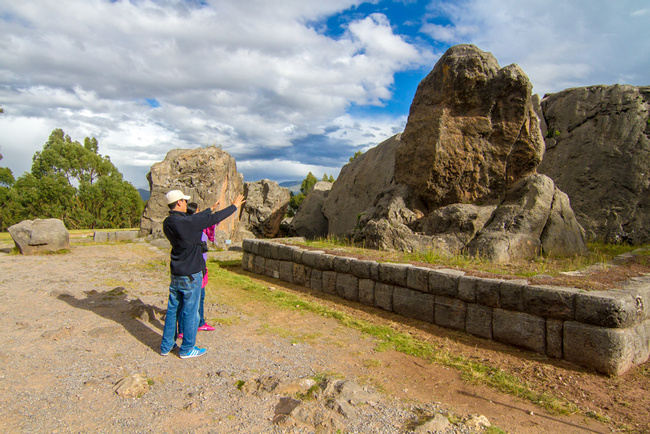Q’enqo
Q’enqo is an archaeological site just 15 minutes from Cusco. This site is a mysterious and dark reminder of the sacrificial practices and death rituals of the Incas.
More about Q’enqo
Stretched across a hillside, Q’enqo is a unique temple in its construction, as it’s carved entirely out of a naturally occurring monolith. Many of the wak’as (holy places) in the Cusco region were created around natural rock formations, but Q’enqo is one of the largest and most impressive in the area.
The name Q’enqo, which means labyrinth or “zigzag” in Quechua, is thought to derive from the zigzag channels carved into the top of the temple. The channels are believed to have been used for the pouring of sacrificial chichi – llama blood – by priests during festivals, celebrations and death rituals. The walls of the temple show a series of intricately carved designs, including pumas and condors.
The complex offers visitors the opportunity to explore the series of man-made caves and tunnels beneath the rock; this exploration leads to an altar, indicating that these “secret chambers” were probably used for ceremonial purposes. One of these chambers features 19 small niches and resembles an amphitheater. The purpose of such a theater has been lost over time, but most agree the area was used for some type of sacrifice to the sun, moon, and star gods who were worshipped there.
Despite its dark purpose, Q’enqo Temple’s carved tunnels and chambers are an astounding example of ancient architecture, and perhaps for its dark purposes, the feeling of mystery still permeates visitors at this holy site.
We believe travel is more than ticking destinations off a list – it’s about discovering new places deeply, feeling connected wherever you go, and knowing you have a trusted team behind you every step of the way.




